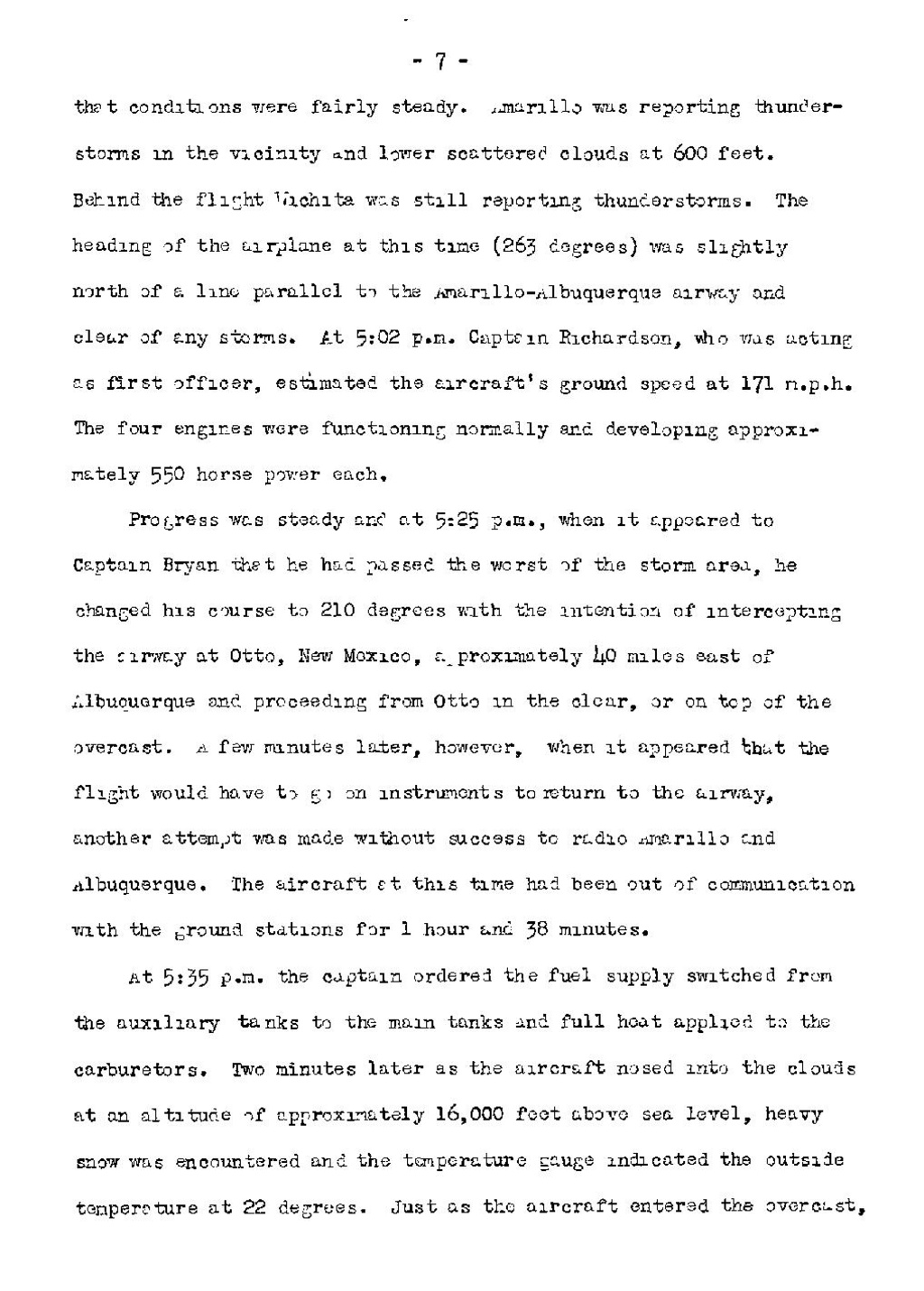- 7 -
that conditions were fairly steady. Amarillo was reporting thunderstorms in the vicinity and lower scattered clouds at 600 feet. Behind the flight Wichita was still reporting thunderstorms. The heading of the airplane at this time (263 degrees) was slightly north of a line parallel to the Amarillo-Albuquerque airway and clear of any storms. At 5:02 p.m. Captain Richardson, who was acting as first officer, estimated the aircraft's ground speed at 171 m.p.h. The four engines were functioning normally and developing approximately 550 horse power each.
Progress was steady and at 5:25 p.m., when it appeared to Captain Bryan that he had passed the worst of the storm area, he changed his course to 210 degrees with the intention of intercepting the airway at Otto, New Mexico, approximately 40 miles east of Albuquerque and proceeding from Otto in the clear, or on top of the overcast. A few minutes later, however, when it appeared that the flight would have to go on instruments to return to the airway, another attempt was made without success to radio Amarillo and Albuquerque. The aircraft at this time had been out of communication with the ground stations for 1 hour and 38 minutes.
At 5:35 p.m. the captain ordered the fuel supply switched from the auxiliary tanks to the main tanks and full heat applied to the carburetors. Two minutes later as the aircraft nosed into the clouds at an altitude of approximately 16,000 feet above sea level, heavy snow was encountered and the temperature gauge indicated the outside temperature at 22 degrees. Just as the aircraft entered the overcast,
